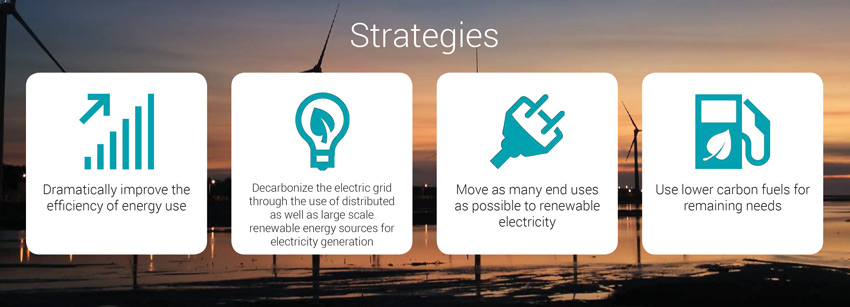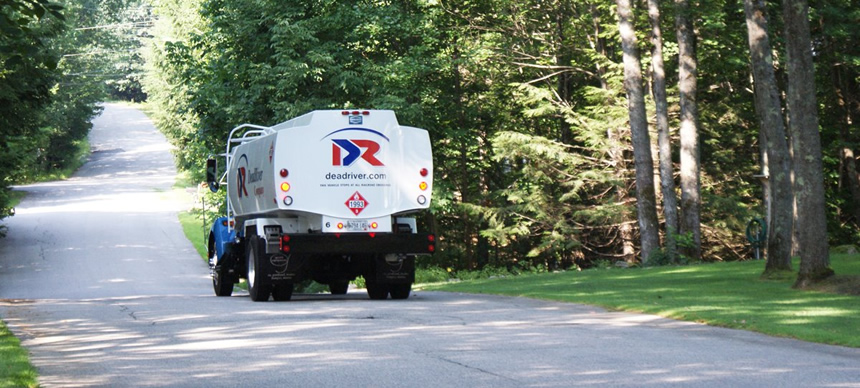By Sue Coakley | Tue, December 11, 18
The energy and carbon intensity of existing buildings has been a vexing problem for more than three decades. While lighting, appliances, and a wide variety of other technologies have significantly upgraded energy performance, the buildings that they are placed into have been remarkably resistant to major change.

Direct fossil fuel use by end use and sector in New York and New England. (Northeast Regional Assessment of Strategic Electrification, Northeast Energy Efficiency Partnerships, July 2017)
Improved heat pump technologies, a decarbonizing grid, and state and local government mandates to achieve aggressive carbon goals have created new opportunities to dramatically change the energy and carbon footprint of existing buildings. To date, the pace of change is very slow; less than one percent of buildings have switched from fossil fuels to advanced heat pumps, primarily ductless heat pumps that serve only part of the building load. Without a rapid and relatively complete change to existing building heating energy, northeast state climate stabilization goals simply cannot be met as the building sector represents more than 40 percent of total carbon emissions in Northeast states.
Transforming the market
The existing building heating market in the Northeast U.S. needs to transform such that improved building efficiency and decarbonization become market norms, creating a wide variety of new consumer value and business opportunity. To achieve this, consumers must electrify space and water heating in their buildings, improve the thermal efficiency of their buildings, and enable smart control of the resulting electricity loads to support grid flexibility and avoid costly new grid peaks.

Market transformation to support wide-scale building decarbonization requires three major changes:
- First, the cost and performance of essential technologies and technical practices of heat pumps, related smart grid-connected controls, and building energy efficiency must continue to improve.
- Second, consumers must understand and value the benefits – including air quality and myriad health benefits – of more efficient buildings and of switching from fossil fuels to electricity.
- Third, state and local policies must drive improved home and building energy performance, increased electrification, and grid integration. Policies must support programs, incentives, standards, and workforce development that expand consumer and business activities.
There’s no place like home
There’s no better place to start this transformation than right here in our own area. The Northeast region is fertile ground for the development of policies and programs to accelerate building decarbonization to achieve state climate stabilization goals. NEEP is well-positioned and committed to expanding its impactful regional partnerships to achieve this goal, working with others to drive large-scale market transformation.

In the Northeast, a useful place to start in the Northeast is to reduce the current appetite for fuel oil and propane used to heat buildings. Nationally, 11 million homes burn fuel oil or propane for space and/or water heating. A majority of them are in Northeast states which rely on fuel oil and propane more than the rest of country.. Because these fuels are more carbon intensive and expensive, high performance ASHPs offer significant carbon and consumer cost savings. Neighborhoods with aging natural gas lines in need of upgrade or replacement are another high value target for efficient electrification of comfort and water heating.
A national analysis by Rocky Mountain Institute (The Economics of Electrifying Buildings, RMI 2018) indicates that replacing existing oil and propane space and water heating systems in homes would have lower net present costs over a 15-year period. RMI analyzed the economics in several cities throughout the county, and the city representing the Northeast (unsurprisingly) showed the most favorable economics for replacement with high performance heat pumps. This analysis recommended but did not include concurrent efficiency upgrades or smart controls, which could further reduce net costs and improve home value.
Unfortunately, lower net costs over time is not alone a reliable motivator of consumer behavior. Consumers are not familiar with cold climate air source heat pumps (ccASHP), and the initial costs to install them are higher than simple replacement of the existing heating. Further, the network of trained ccASHP installers is still very limited. These are significant consumer barriers to efficient electrification. However, high performance ccASHPs offer additional consumer benefits including extremely efficient cooling, improved control, reduced maintenance costs, and reduced health and safety risks (e.g., fuel leakages, indoor air pollution from burning fossil fuels). Adding thermal efficiency upgrades (e.g., insulation and air sealing with controlled ventilation) improves comfort, health, safety, and resilience in the face of extreme outdoor temperatures.
While the favorable long-term economics may persuade a few "early adopters" to switch to heat pumps, the vast majority of customers don't even know they have that option. For low-income households, the higher costs of fuel oil and propane create an additional cost burden, but the cost of any replacement heating system can be a significant problem. That many low-income households live in rental properties creates further complexities in upgrading homes to efficient, low-carbon home heating.
Putting the pieces together
We have an opportunity to begin changing the residential space and water heating market, but only a few parts of the solution are in place today. Consumer education, lower cost options, financing, increased market capacities to provide ccASHPs, and efforts to help low-income households are all needed to build market momentum for efficient electrification.
To help advance the transition, NEEP will launch "Building Decarb Central" in February 2019 as a regular newsletter to provide information about the process, solutions, and progress of decarbonizing our buildings in the Northeast and throughout the country. We invite your participation and support. Please contact us directly at dhewitt@neep.org and lcascio@neep.org with your suggestions or contributions. Be sure to visit the NEEP website to see more information on our heat pump, buildings and strategic electrification efforts.
